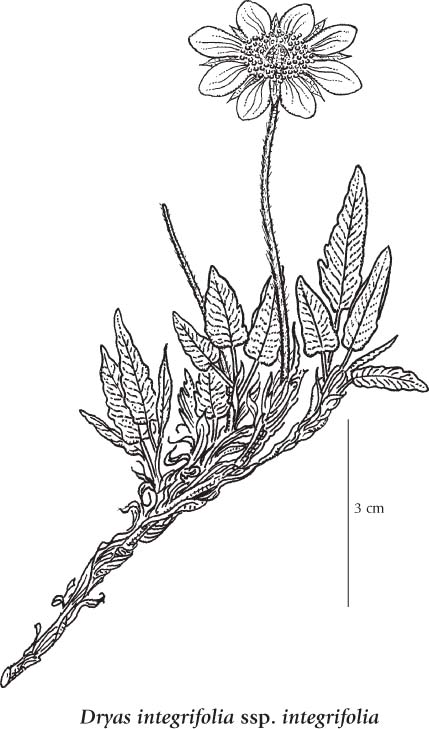Dryas integrifolia : Entire-leaf Mountain Aven
Taxonomy | Description | Biology | Ecology | Uses | Images | Range Maps
Taxonomy |
Scientific Name:Kingdom: Plantae Division:
Class: Dicoteldonae (two seed-leaves) Family: Rosaceae (Rose Family) Genera: Dryas (Mountain Avens) (Gk. Drus = Oak; referring to the resemblance of the leaves of some species to oak leaves.) Species: integrifolia (Lat. integer=whole, entire + folium=leaf = entire leaved; referring to the smooth leaf edges.) Synonym(s): D.sylvatica English Name(s):Entire-leaf Mountain Aven, Entire-leaf Dryas, White Dryas/Mountain Avens First Nation Names:
|
Description |
Structure:
Leaves:
Reproductive Parts:
Seed:Not to Be Confused With:
|
Biology |
Physiology:
Life Cycle:Seasonal Cycle:
|
Ecology |
Animal Uses:Habitat:
|
Images |
|
Illustration from: Illustrated Flora of BC |
Range Maps |
|
World Range: North American; from GL, LB and NL to AK and BC, south to Gaspe QC, Lake Superior, and into west MT.
In Yukon: Widespread |


